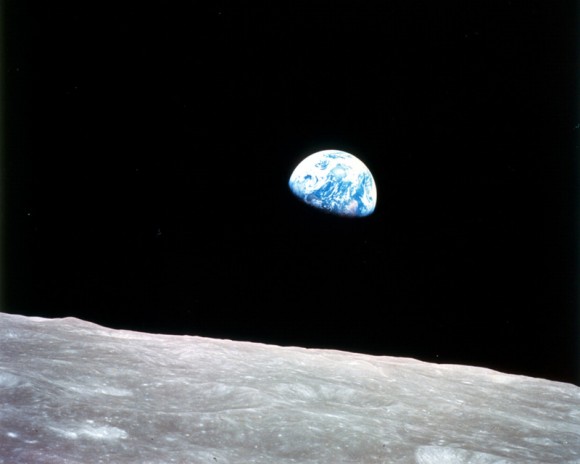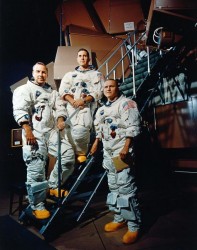One of the achievements of the mission, which was the first manned mission in the Apollo operation, about six months before Apollo 11, was the photographing of the Earth shining above the Moon and opening the era of concern for the environment

The Apollo 8 flight was a defining moment not only in the history of spaceflight but also in human history in general.
The mission took place at a time when the US and the world were divided by wars and racial conflicts. The mission saved 1968 from its record as a difficult year, and made the three astronauts: Frank Borman, Jim Lovell and Bill Anders "People of the Year" by Time magazine.
Apollo 8 was the first spacecraft to orbit the moon but it was not supposed to. The mission also gave Earth the iconic images of our time, and they are indeed iconic to this day.
Originally, the mission was intended to test the lander on the moon in orbit around the earth, but the moon lander was not a machine. And there were also political considerations, according to which NASA was given false information from the CIA, according to her The Soviet Union is planning a manned mission to the moon and it is already ready for launch. Since NASA wanted to be the first to land a man on the moon and fulfill President Kennedy's 1961 request to land a man on the moon by the end of the decade, they took a gamble and decided to take Apollo 8 for a loop around the moon.
The decision was controversial. The Saturn 5 rocket, the only one capable of landing humans on the moon, suffered from problems and instrument failures during two unmanned test flights. Also, everyone still remembered the fire in 1967 that killed three astronauts: Gus Grissom, Ed White and Rocher Chaffee during an experiment on the ground of the Apollo chamber.
The bet paid off. The crew launched on December 21, and were the first human crew to lift off aboard a Saturn 5 rocket. Everything went well, although Anders says he felt strong vibrations during the first minutes of the launch and felt like an insect on a car antenna moving back and forth and the huge rocket hall 110 meters and with a weight of almost 3,000 tons worked properly and so did the blood of the rocket that took them to the lunar orbit.
On Christmas morning 1968 they reached their destination. The astronauts activated the propulsion system to slow the rocket down, and entered orbit around the moon. During the first three laps, the astronauts turned their windows down - to the lunar floor and photographed the craters and mountains below them. One of their missions was to conduct a preliminary reconnaissance for the planned Apollo landings.
It wasn't until the fourth lap that Borman decided to turn the spaceship away from the moon and point the windows towards the Oak to provide them with a navigation point. A few minutes later he actually noticed blue and white colors rising above the horizon. It was the earth from a distance of 380 thousand kilometers, shining behind the moon. "Oh my God, look at the great sight there, here comes the Earth" Borman shouted. The next shouts were from Anders and Walle who were looking for a camera. Anders found one and the first photo he took was in black and white showing the Earth peeking over the oak. Anders then found 70 millimeter color film for the Hasselblad camera, and he captured the image of the Earth's sunrise that became an icon of the 20th century, demonstrating technological progress as well as increasing environmental awareness.

It was the first time that people recorded their planet as it looked from another world: it was the most beautiful and captivating sight I've ever seen in my life," Borman said later, one that sends a flood of nostalgia, of longing surrounding Uitz. It was the only thing in space that had a drop of it. Color. Everything else was either black or white, but not the earth." Jim Lovell said that Earth was "a magnificent oasis in the vast loneliness of space".
The three astronauts agreed that the most important thing they brought in this mission was the pictures, not only of the moon but rather the ones in which the Earth was photographed.
By the way, history is supposed to repeat itself when NASA requests during preparations To return to the moon to hold his manned cafe again, in 2015 (Currently, apparently the whole project may be delayed).

4 תגובות
Really interesting!
You helped me a lot in my work in physics, this information is very interesting, I will continue to take ideas from this site!
Because then they were ready for flight.
Why did they take off on December 21?
The Russians are planning a manned flight to Mars